Chris Parkin puts the Howa 1500 Carbon Stalker in .243 through its paces in this detailed .243 rifle test and review
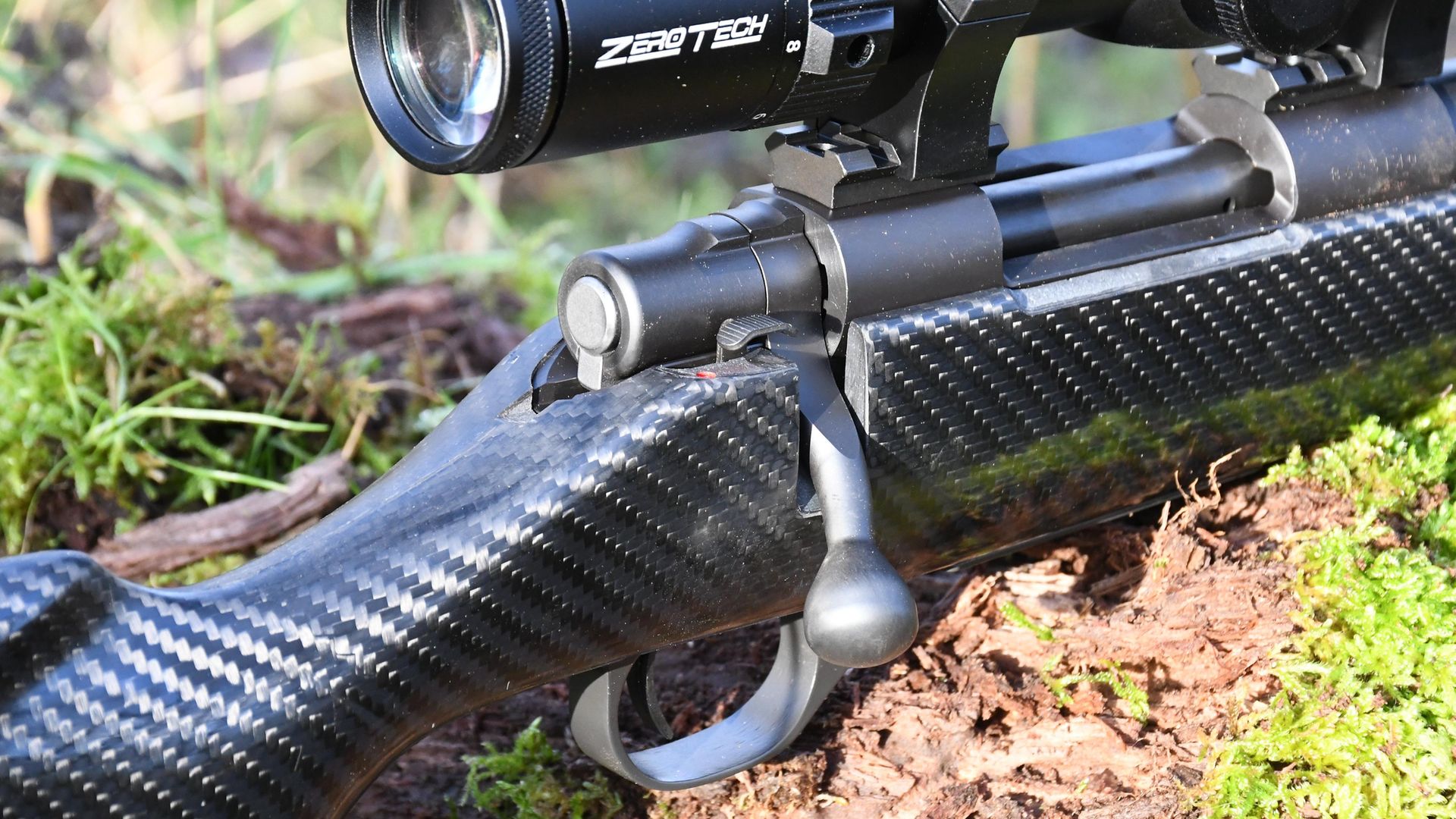 credit: Chris Parkin
credit: Chris Parkin
Howa have joined the carbon-fibre stock club with their latest Carbon Stalker offering, which combines the versatility of the Howa-barrelled action range with an additional super-lightweight stock option for the weight conscious who may have to tote their rifle a long way over tough terrain for a single shot. It’s interesting to think of how little time a rifle is actually in action when you're hunting, so when the hunt is the focus, rather than tiny groups on a target to show your friends, it makes a lot of sense to think a little differently instead of just reverting to type.
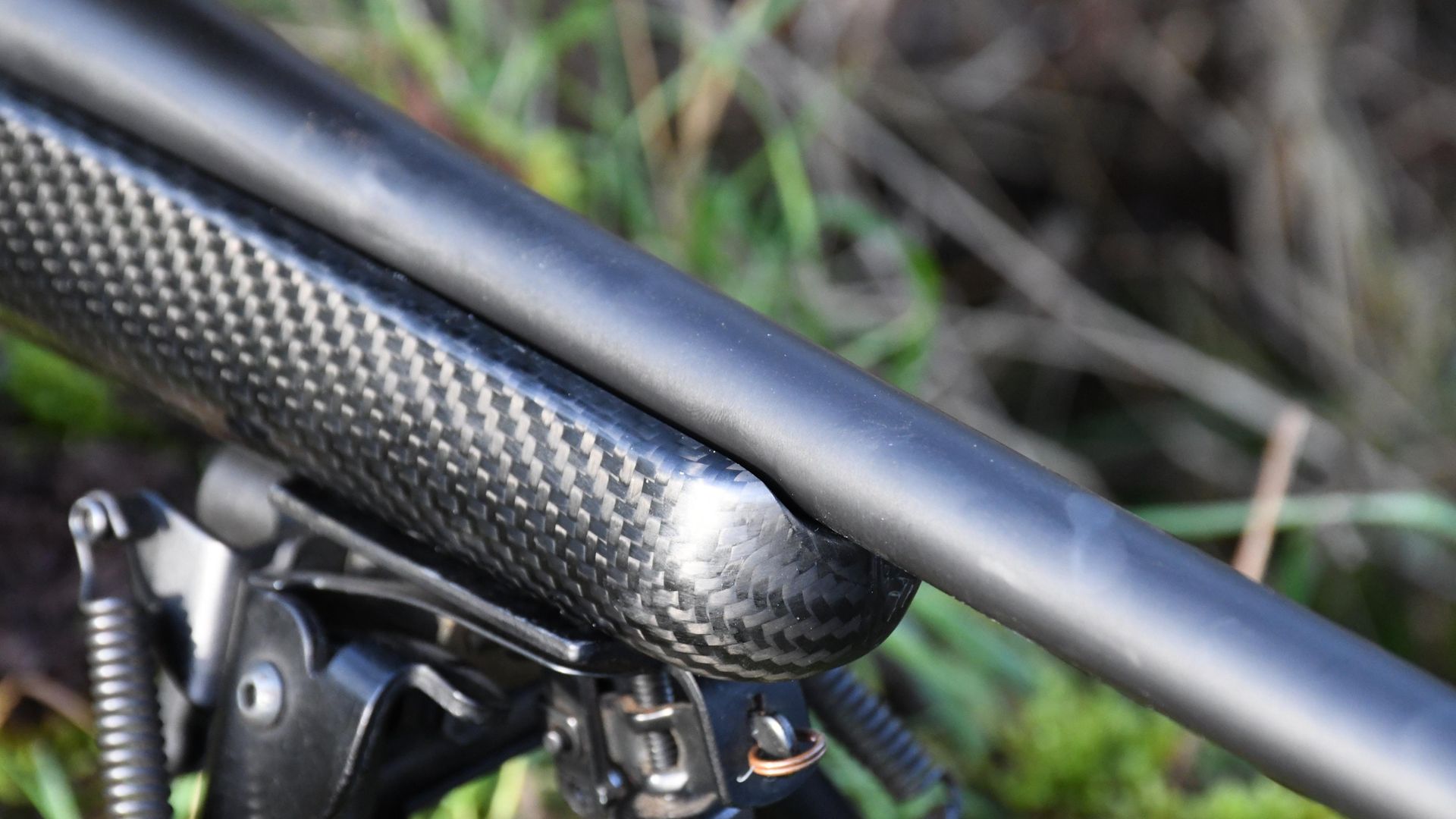 credit: Chris Parkin
credit: Chris Parkin
Overview of the Howa 1500 Carbon Stalker
The Legacy Sports website doesn’t go into too much manufacturing detail, so here is what I can see from actual use, disassembly and inspection of the stock. This is a carbon-fibre clamshell wrapped stock with dense ‘foam’ core filler. The receiver is held captive with twin T30 Torx screws spanning the bottom metal’s floorplate on the underside of the rifle. Spinning these free reveals cleanly cut threads with minimal friction, and when released the flat-bottomed action shows a tapered front recoil lug with a central threaded hole for the front screw, with the rear one maintaining tension at the back of the tang.
Howa’s HACT trigger hangs below, operating in two stages with a crisp 998gr breaking weight, which is adjustable – but heavy white sealant discourages the procedure. Inspection of the stock’s inlet shows very neat, computerised machining of the hard core that is wrapped by the carbon skins for stiffness. The recoil lug pocket has neat corners for Howa’s characteristic tapered recoil lug, although this metallic form’s taper is matched to a stepped layout on the inlet rather than a smooth ramp.
The floorplate magazine fits snugly on the similarly neatly machined underside, while its internal steel liner, a folded steel component, is equally snugly slotted through the stock, where it locks into the receiver’s underside steel pocket and similarly into the aluminium floorplate itself. When re-assembling, this needs a small wiggle to ensure the correct location, followed by correctly re-tensioning the action screws. These spin freely to a firm stop as the action physically meets its inlet, and it is delightful to feel the torque immediately rise and then ‘click’ as it peaks. There’s no mushiness and no bending of surfaces encroaching onto the inlet.
When testing bedding stress (tensioning both screws and then observing barrel lift as the front is released), there appears to be no movement, which indicates a stress-free fit – although the barrel itself does not fully free-float. This may or may not be a psychological issue for many shooters, but Howa do offer an MOA assurance (using premium ammunition) as well as a lifetime warranty with their rifles.
It’s difficult to know how this will or won’t appeal to some shooters, although as later shooting confirmed, the combination of this unstressed, yet contact-fit barrel with a very stiff stock seemed to pose no problems with the first three shots, as likely used in a hunting scenario.
The stock’s underside shows a central seam where the carbon meets and is then finished flat. This seam is also visible on the underside of the grip, the tang area and the buttstock, indicating two halves of a clamshell having their flanges bonded together before filling. When this hardens, it is machined out to create the internal inlet. Similar material is removed for the bolt handle, and so on. It’s a common and well-understood process for creating glass and carbon-fibre composite components and has been in use for decades simply because it works so well.
Externally you get the delightful carbon warp and weft finish of the woven fibres with a polished smooth finish, just flattened off to remove any overly shiny glare. There is no chequering or similar stippling, and inlays are added to the forend or open radius grip.
I didn’t have any tactile issues, but this is, of course, never going to be quite as assured as with one of the former finish types. Perhaps it’s a little at odds with some of the pure aesthetic carbon ethos, and a factor in choosing a carbon stock would be a consideration of whether it is relevant to your hunting environment. Secure sling studs for a bipod on the forend are fitted to offer an easy location for the rifle to be shouldered for its all-day carry, when the minimal weight is appreciated.
The rearmost buttpad is a Limbsaver unit, 18mm thick without excess bulk. It locks well into the shoulder pocket with a conventional shape and is not spongy at all. Recoil on a .243 is no great test, but the handling was very mild and I have no doubt it would transfer well into the larger calibres. .243s can be a bit vertically lively at the muzzle on lighter guns, but this one was quite tame.
A relatively tall comb with slimmer upper radius fits well under the cheekbone without displacing the jaw, internal fillers moderate any undesirable handling or recoil harmonics when firing, and you can keep your head/eyes securely positioned to maintain your sight picture through recoil. I don’t get to shoot every calibre in every stock, but my overall experience leads me to believe this stock will respond predictably in proportion to recoil, becoming livelier as it goes up for sure. But it’s not the kind of stock that is just bearable in .223 yet likely to be a handful in the larger choices.
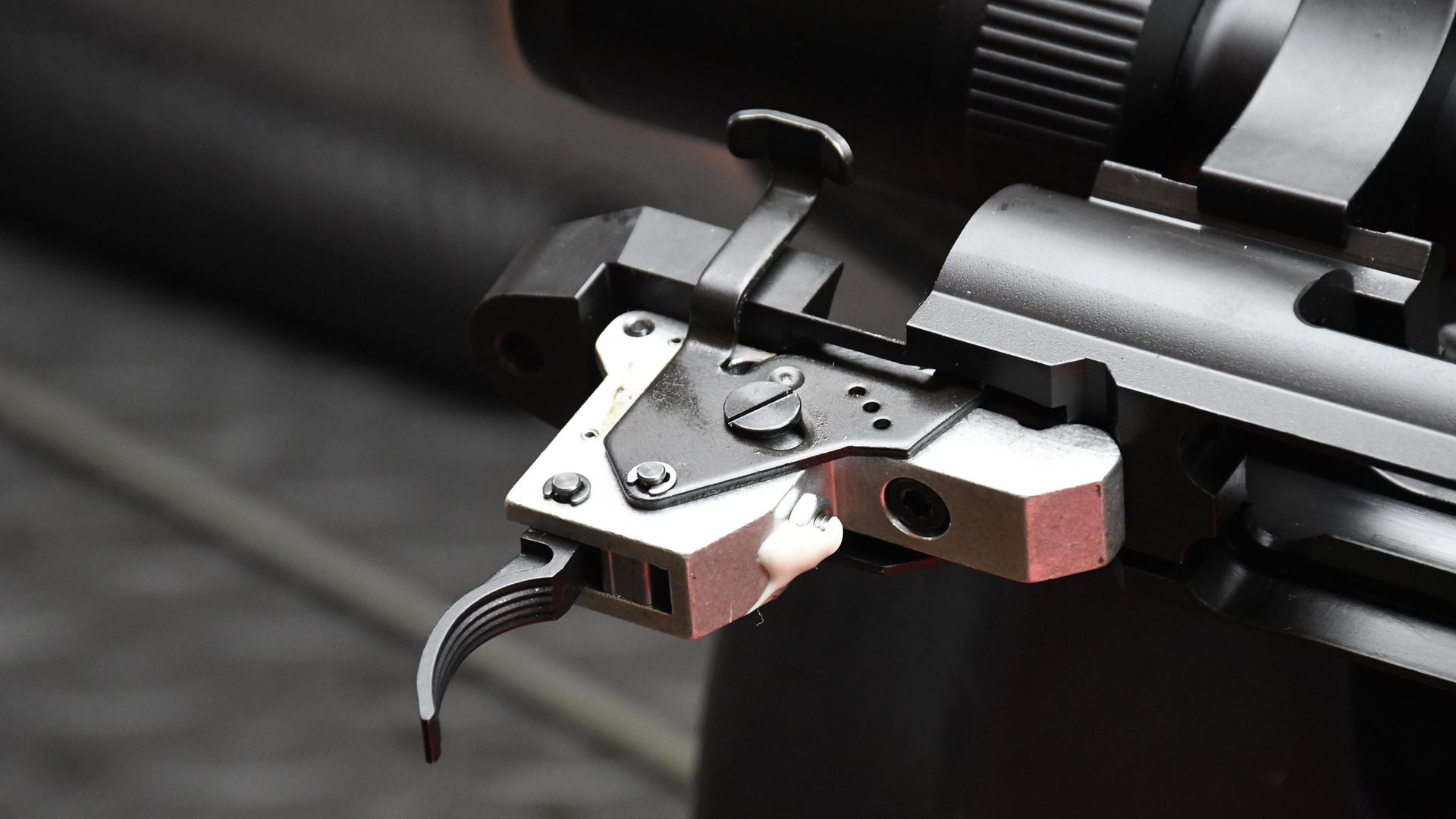 credit: Chris Parkin
credit: Chris Parkin
Further details of the Howa 1500 Carbon Stalker
This is not the first time we have seen the Howa action in its various formats. The calibre range on offer comes in three action lengths – long, short and mini – ensuring it’s an appropriate fit for your chosen cartridge/chambering. The range spans the usual suspects, plus a larger .300 Win Mag and newer .300 PRC – although I have yet to see a rifle with this chambering, or indeed ammunition to fit it.
Under a threadcap, the barrel of this .243 has a 17mm diameter thread cut at ½"x20 for a moderator or brake. Highland supplied me with an RCC Carbon 44 unit, whose similar build style visually complements the Howa, with the lightweight handling also much appreciated.
The barrel shows a matt blue/black finish with no specific coatings. Its chambered tenon screws into the front of the action above the recoil lug to face the twin-lug, push-feed bolt with 90° handle lift. Rounds fed smoothly from the floorplate up the internal feed ramp, with all extraction and ejection duties performed without fault by the right-side claw and left-upper sprung plunger.
The bolt is 17.2mm in diameter and rides within a receiver showing twin lateral broached raceways for the two lugs to run in. A bolt stop actuator sits to the left of the tang, behind the rear action bridge, and the two bridges offer threaded holes compatible with Remington 700 bases or longer Picatinny rails. Howa supply two Weaver-type bases with the rifle, as well as a rather nice padded rifle slip to keep everything stored away.
An 18.5mm teardrop tips the 62mm bolt handle, which lifts 90° to cock and unlock the action. Primary extraction is plentiful and the bolt shaft itself offers 104mm stroke length for mid-length chamberings such as .243, .308 or Creedmoors in this medium action. Travel is relatively smooth, although as a twin-winged lug bolt, compared with the increasingly common three- or six-lug bolts on full diameter shafts, it’s not quite as fast to operate. As with pretty much any twin lug, it is also more easily jammed (either accidentally or deliberately) but Howa have thankfully not added a stupidly long tacticool handle that would only make matters worse.
The underslung back trigger blade is 6mm wide with grooves for grip. The width feels well balanced on the index finger with the breaking weight supplied. I generally find the HACT triggers, regardless of weight, to be well timed and easily judged for confident shooting. This was perhaps the best one yet, with the almost 1kg breaking weight.
Lastly, the safety catch is a three-position unit: forward for fire, centre position safe with locked trigger, and rearward to lock the bolt. It’s a folded steel lever, hard to nudge accidentally, tactile in use with the firing-hand thumb and quiet, making it unlikely to alert any sharp ears in a moment of excitement.
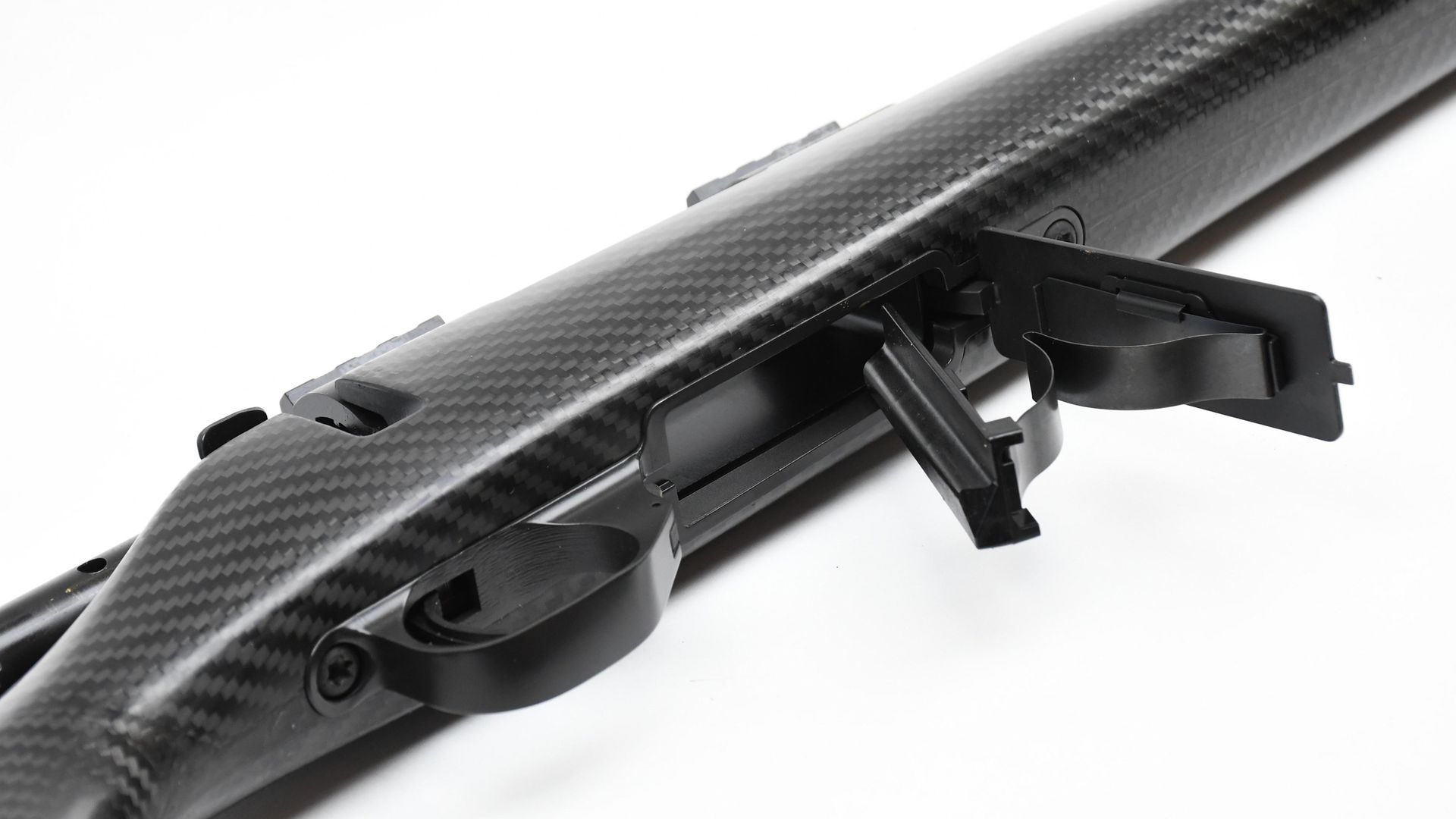 credit: Chris Parkin
credit: Chris Parkin
Testing the Howa 1500 Carbon Stalker
Getting onto the 100m range, I ran through several types of .243 ammunition, suitable for a variety of uses. After a run in and zero, the first serious targets were tackled with 95gr Winchester Extreme point, which although offering satisfactory energy, wasn’t really delivering what the rifle’s MOA assurances suggested it should be capable of.
After another clean, it was on to the next ammo type. Moving more into familiar territory, 100gr soft nosed Hornady Interlocks were spot-on deer capable, within the magic minute and with reliable ballistic performance. This shorter exposed lead design remains modest in overall length to stay within the realms of stability for the Howa’s 10" twist-rate barrel. This is the exception, rather than the rule, from broad experience with .243 rifles whose performance is just as changeable with temperature variations as it is between ammo brands when twist rate stability is borderline.
Technically muzzle energy at 1,648ft-lb is weak from a legal standpoint in some regions and is another factor to consider with shorter-barrelled .243s. I was a little surprised as this isn’t usually a problem on a 22" .243 tube but perhaps a cold, damp day isn’t the environment the ammunition was developed in?
The 90gr ELD-X is perfect .243 middle-ground, bullet-weight territory for many UK shooters and here it performed delightfully, with reduced groups on target and acceptable velocity and energy.
Note that very few ammunition velocity measurements achieve what is stated on the box, regardless of chambering, and it’s not a huge worry factor. You must consider every barrel somewhat unique, including test barrels with whatever twist rate they have and specific rifling tolerances that may or may not create more pressure and speed.
I personally like 75gr for foxing in .243 and the SST from Hornady was the star of the show, producing a 0.45 MOA group at 100m – 9% further than 100yd, remember! Velocity was fair at 3,185fps and it shoots smoothly over longer ranges, better resisting the wind for hard-to-read night-time foxing forays, with just shy of 1,700ft-lb.
Finally I tried some ‘light for calibre’ 55gr Sakos, which performed well enough, but with the overbore cartridge dimensions for a light 6mm bullet, highlights just how much velocity can be advertised, yet not achieved in the real world. Therefore you should always chronograph ammunition rather than just believe what it says on the box if you want to start precisely computing better ballistic solutions and then test them.
Overall I experienced no problems with any of the ammunition I tested. To be fair, the Winchester extreme point have only ever really impressed me in one rifle of the many I’ve tried it in, and that was a different calibre anyway. I think the oversized polymer tip, although initiating massive terminal expansion very quickly, is liable to cause imbalance issues at the high rotational speed.
Going back to the non-floating barrel, well, it didn’t bother me. I shot the rifle in various scenarios, free-hand, bipod mounted and from sticks, and as long as it was handled with reasonable care and not brutally there was never any problem with a changing POI. It also seemed well annealed with minimal dispersion through heating. As it is steel, on a cold day it cooled quickly, too.
Cleaning revealed nothing to be concerned about and a bore scope inspection showed a barrel of above-average manufacturing standard without undue machining marks to strip or retain copper. The crown was neat and given the lightweight build I was confident carrying the gun. It balanced well and was fast to flip up onto the sticks from the sling, yet was never too floaty or delicate when aimed.
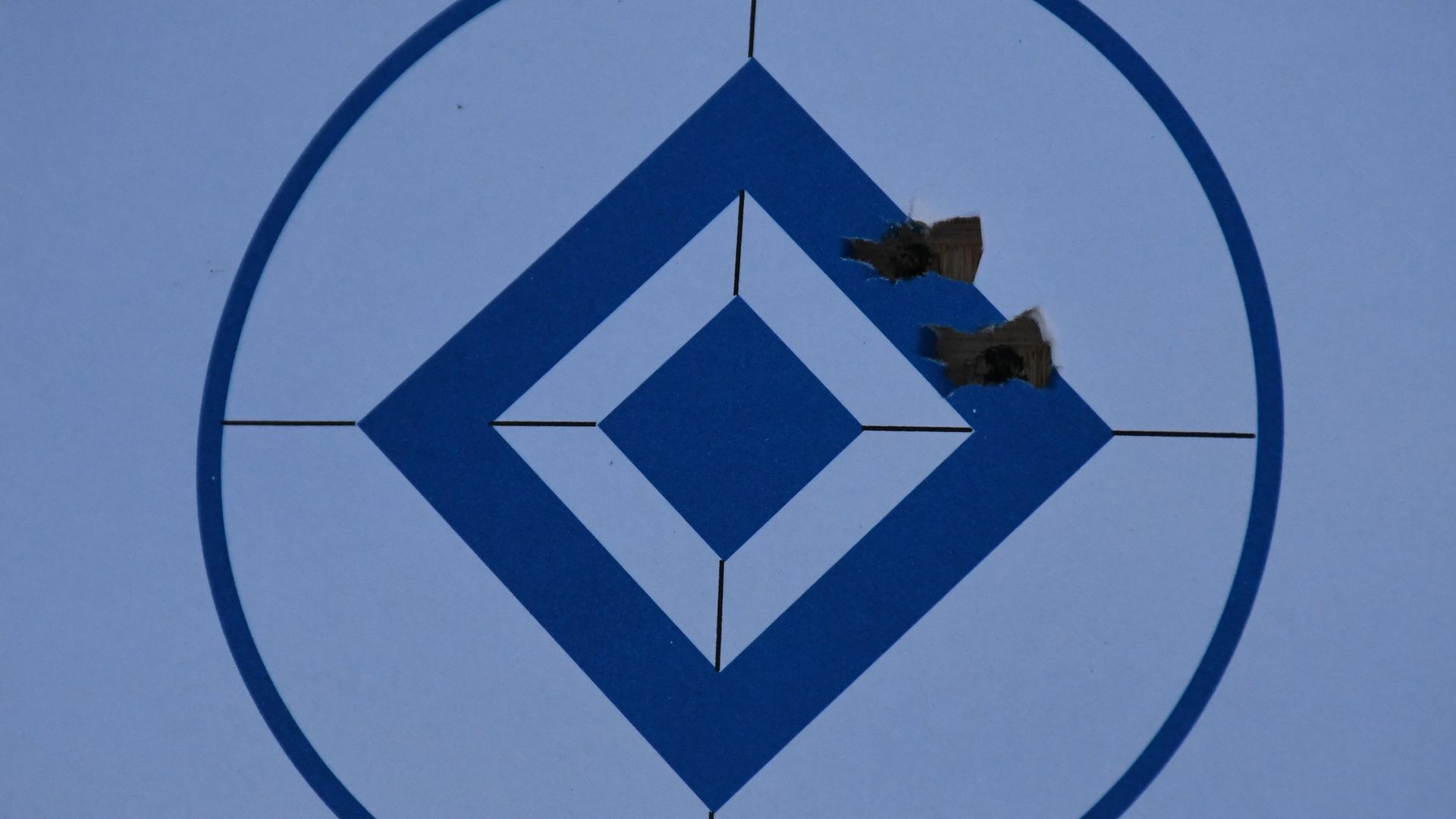 credit: Chris Parkin
credit: Chris Parkin
Ammo | Advertised
muzzle
velocity (fps) | Muzzle
energy
(ft/lbs) | 3 round
group
(MOA) |
Hornady
Interlock
100gr | 2950 | 2724 | 1.0 |
Hornady
90gr
ELD-X | 3150 | 2927 | 0.86 |
Sako
Gamehead
55gr | 3940 | 3639 | 1.1 |
Hornady
SST
75gr | 3580 | 3185 | 0.45 |
Winchester
Extreme
Point
95gr | 3100 | 2854 | 2.3 |
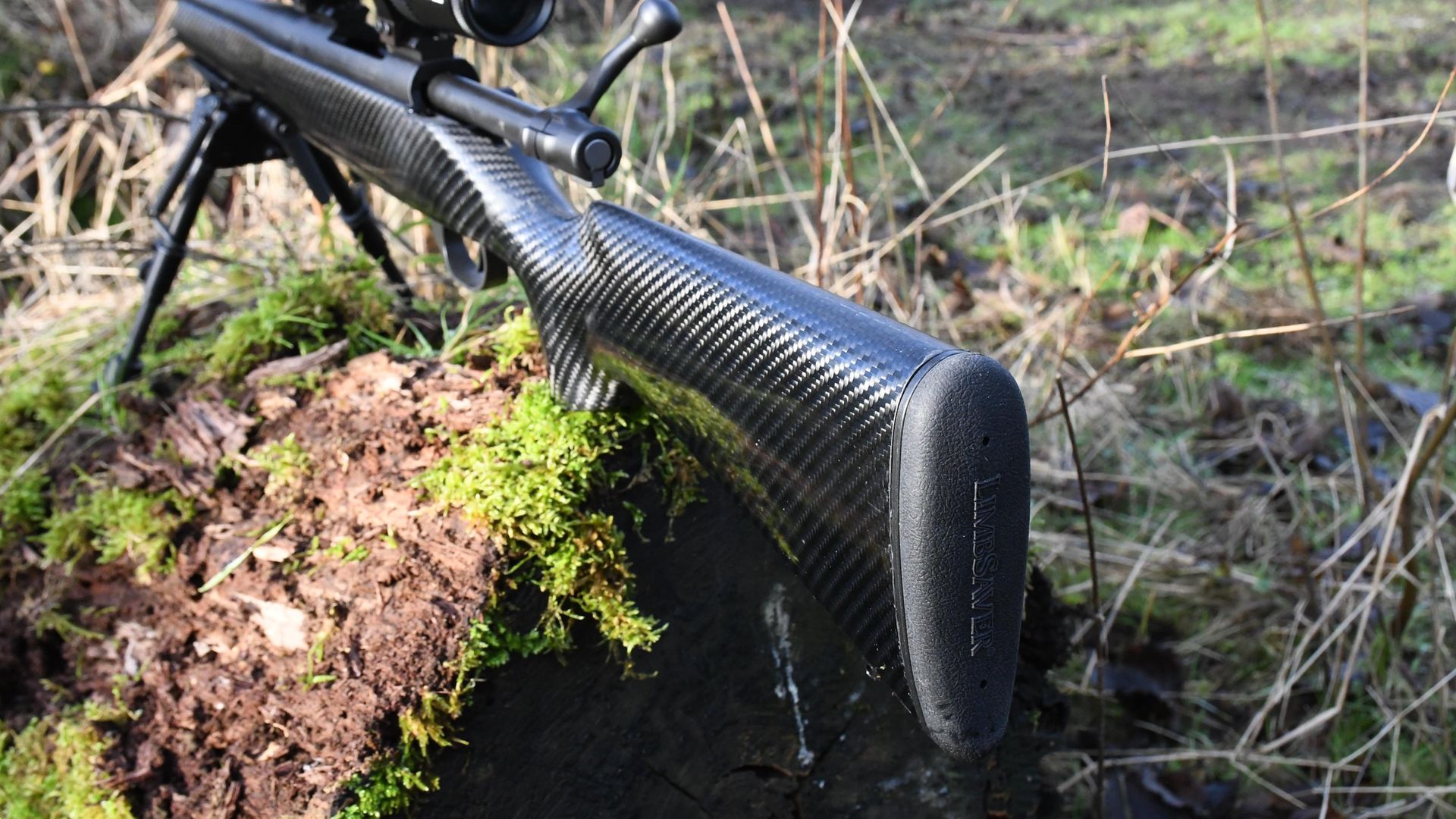 credit: Chris Parkin
credit: Chris Parkin
Verdict
I think carbon fibre is a superb material for stocks and well worth spending the money on to save weight. I’m wary of going too light in barrel weight and length (as ballistic data shows, particularly in .243), so if mass is the overriding factor I see carbon as the logical way forward, especially as prices are steadily falling. It’s also noticeable how the inherent stiffness without bulk avoids problems with forend movement.
To sum up the gun, it’s one of those that does exactly what it says it will. There are no hidden delights in terms of engineering creativity, but on the other hand there are no demons brushed under the carpet out of view, either.
This is yet another Howa that can be built modularly at a modest cost to suit your needs. Perhaps a little more grip on the stock would be a nice addition, but to be fair this never seemed to cause problems for me. Everyone’s hands are different, of course. There is no palm swell, so it’s totally ambidextrous, which I like in a sporting rifle, makes it one to look at for the left-handers.
Length of pull is short compared with its peers, but you can add spacers as with any rifle, and doing so would not make the gun appear out of proportion. Thankfully the butt’s overall shape is well profiled to the action, barrel and forend for slim looks without the ‘tiny afterthought’ stock some US rifles seem to have.
Tech specs
Calibre: .243 Winchester, Calibres available - .223, .22-250, 6mm Creed, 6.5mm Creed, 7mm08, .308 (later this year in .270, .30-06, 7mmRem Mag, 300Win Mag, 6.5PRC, 300PRC and for HOWA Mini-Action)
Barrel length: 560mm/22”
Overall length: 1067mm/44”
Weight: 2.96kg/6.52lbs
Muzzle thread: ½”x20
Stock: Carbon fibre
Length of pull: 13 5/8”-345mm
Trigger: 2 stage HACT breaking at 898gr/35 oz.
Safety Catch: 3 stage with bolt lock
Magazine: Hinged floor plate, 5+1 capacity
Suggested Retail Prices:
Howa Carbon Stalker – SRP £1209.99 (2-piece bases and Howa Gun Case included)
RCC Carbon 44 – SRP £349.99
Sig Rings – SRP £62.99
Zerotech Scope – SRP £383.99
Contact:
Highland Outdoors
www.highlandoutdoors.co.uk
Ammunition used:
Hornady from Edgar Brothers
www.edgarbrothers.com